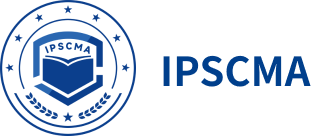Against the backdrop of increasing global economic uncertainty, enterprise procurement management is facing unprecedented challenges. According to Deloitte's 2023 Global Supply Chain Survey, more than 78% of enterprises have experienced supply chain disruptions in the past two years. How to build a resilient procurement system in a complex and volatile environment has become a top priority for enterprise managers. Especially with the rapid development of generative AI technologies such as ChatGPT, the digital transformation of procurement has ushered in a new period of opportunity. In this article, we'll take a closer look at how to optimize your sourcing strategy and improve supply chain resilience in the face of new technologies.
The supply chain landscape in the post-pandemic era is undergoing profound changes. According to the latest research data from McKinsey, the scale of global supply chain restructuring will reach 4.2 trillion US dollars in 2023, an increase of more than 85% from 2019. This change is mainly reflected in three levels: first, the diversification of the supplier network, with companies increasing the number of alternative suppliers by an average of 23% to diversify risks; Secondly, there is an obvious trend of localized procurement, with more than 65% of manufacturing companies promoting the localization strategy of the supply chain; Finally, digital transformation accelerated, and the automation rate of procurement processes increased by 31% year-on-year.
In this context, the traditional cost-centered procurement model has been unable to adapt to the needs of the new situation. Companies must build a more agile and intelligent procurement system to improve operational efficiency while ensuring security of supply. According to PwC's analysis, companies that adopt intelligent procurement solutions can achieve a significant reduction in procurement cycle time by 40% and error rate by 60%.
The emergence of large language models such as ChatGPT has brought revolutionary changes to procurement management. These AI tools can play an important role in supplier selection, negotiation strategy development, contract management, and other links. According to Gartner, by 2025, more than 70% of enterprises will apply AI technology in their procurement processes. Specifically, the application of AI in the field of procurement is mainly reflected in the following aspects:
The first is intelligent market analysis, where AI systems can monitor raw material prices, supplier dynamics, and market trends in real-time to help companies make more accurate purchasing decisions. Data shows that companies that use AI forecasting can reduce procurement costs by 12%-15%.
The second is supplier relationship management, through natural language processing technology, AI can automatically analyze supplier performance, assess cooperation risks, and provide personalized communication recommendations. This approach has been proven to improve supplier response times by up to 35 percent.
The third is intelligent contract management, where AI systems can quickly review contract terms, identify potential risk points, and provide optimization suggestions. According to statistics, this can reduce contract review time by 70% and increase accuracy by 25%.
When promoting the digital transformation of procurement, enterprises need to follow the principle of "gradual and key breakthroughs". The following three-step strategy is recommended:
The first step is to build a data infrastructure, establish a unified procurement data platform, and realize the standardized management of information. In this phase, the focus is on sorting out the existing procurement process, improving the data collection mechanism, and laying a good foundation for AI applications. The second step is the introduction of intelligent tools, giving priority to piloting AI applications in the procurement process with a high degree of standardization, such as inquiry and price comparison, contract management, etc. Accumulate experience through small-scale pilots, and gradually expand the scope of application. The third step is to build an ecosystem, which deeply integrates the AI system with existing systems such as supplier management system (SRM) and enterprise resource planning (ERP) to create an intelligent procurement ecosystem.
Looking ahead, the digital transformation of procurement will show three major trends: first, AI applications will evolve from assisted decision-making to autonomous decision-making, and it is estimated that by 2026, 30% of routine procurement decisions will be automatically completed by AI systems; Second, the concept of sustainable procurement is deeply rooted in the hearts of the people, and ESG factors will become an important dimension of supplier evaluation; Third, the procurement ecosystem will be further opened and integrated, and cross-enterprise collaboration will become the new normal. To maintain a competitive edge in this transformation, enterprises must plan ahead and plan for digital transformation as early as possible. As the famous management scientist Peter Drucker said, "In times of change, the only thing that is certain is uncertainty itself." "Only by continuing to innovate and embracing change can we take the initiative in the new round of industrial upgrading.
